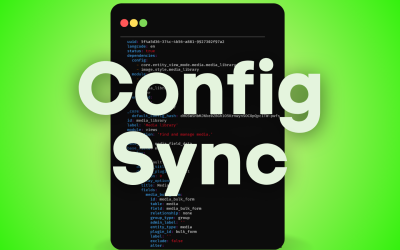A common question we get asked as a web development agency is, what is open source software? In its simplest definition, open source software is software with coding that can be shared and modified by anyone. Its design is publicly accessible and can often be downloaded free of charge, and therefore can be easily altered by developers and engineers in order to make improvements and further develop the software.
Benefits of Open Source Software
There are some main advantages of open source software:
1. Free to Download
Open source software is typically free to download, which makes it the most economical option for many businesses, especially those with a smaller staff and tighter budgets. There are other ways (non-monetary) to contribute to an open source software project, which are often posted on the download site.

Closed source software or proprietary software (computer programs whose source code is not published) requires licensing and/or additional authorization to alter its coding. It therefore tends to be a much more expensive option that isn’t always feasible for smaller businesses.
2. Built-In Support Community
If an open source software project is active, then you can count on having access to technical support from its development community. Communities of highly skilled software development professionals dedicate time and resources to reviewing and testing all code changes on a regular basis to fix any bugs that may occur.
These communities also provide a great resource for anyone involved in computer programming, as any bugs encountered and/or resolved are typically well-documented throughout the process. In addition to fixes being well-documented, those working on developing the software further are typically very responsive to questions from other open source community members.
3. Flexibility
Some prefer working with open source vs closed source due to the fact that they can customize it to work the way they need it to. If the program contains coding that they don’t like, they can change it. That’s not typically as easy to do with proprietary software programs.
With proprietary software, users are usually prohibited doing anything with the software that the software’s owners do not allow. With open source technology, the rules are basically the opposite. Open source software encourages computer programmers to access, view, and modify the software’s code at any time, so long as they allow others to do the same with their shared work.
Possible Challenges of Open Source Software
Although there are benefits of open source software, there are also some challenges to consider as well:
1. Tracking Changes
For example, knowing whether you are working with the latest version of the software can be difficult, since changes and upgrades are not easily tracked in open source software projects.
However; this isn’t necessarily an issue for everyone. If the software is functioning properly, then the version you are working with should suffice, and you can avoid the hassle of downloading and upgraded version and getting used to the new changes.
2. Security
Security is another topic that often comes up when talking about open source software. With so the number of open source software projects and users increasing, there is of course the potential for an increase in security vulnerabilities.

However, it’s important to remember that commercial or proprietary software can be subject to the same security issues as open source software. Whether you’re using open source or proprietary software, the best way to avoid disastrous security problems is to ensure that you have the right people and technology in place to address any issues that may come up quickly and appropriately.
3. Choosing the Right Software
Choosing the right type of software for your business can be a difficult process. Your best bet is to do your research and find out as much as possible about any open source platform you are considering implementing. See what people are saying about it, what they like and don’t like, and compare a few options.
Some examples of open source software include Drupal and Joomla. Drupal, for example, is a popular open source content management software that is extremely flexible. Joomla is another type of open source software used for publishing content that is easy to use and keeps track of all content that exists on your website.
These are a just a couple of popular examples of open source software. There is likely an open source platform out there that will meet your needs, but you do spend some time evaluating options to avoid choosing one that isn’t right for your business needs.


